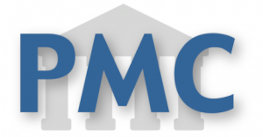detalle del documento
IDENTIFICACIÓN
oai:pubmedcentral.nih.gov:1078...
Tema
Review ArticleAutor
Huang, Haoyu Zhuang, Zesen Wan, Yiwen Shi, Jiao Yuan, Xu Wang, Dan Chen, ShangjieLangue
enEditor
Hindawi
Categoría
Behavioural Neurology
Año
2024
fecha de cotización
25/3/2024
Palabras clave
impairment alzheimer bibliometric publication dyssomnias analysis mci disease cognitive clustersResumen
BACKGROUND: Mild cognitive impairment (MCI), an intermediate stage between normal aging and dementia, has emerged as a prominent research area in geriatric care due to its heightened propensity for progressing toward dementia.
Sleep plays a pivotal role in cognitive function, with dyssomnias not only exacerbating cognitive and affective symptoms associated with neurodegenerative diseases but also contributing to disease progression.
AIM: This bibliometric analysis investigates the global research on MCI with dyssomnias over the past two decades, aiming to discern key findings, research domains, and emerging trends in this field.
METHODS: In this study, a bibliometric analysis was conducted using the search terms “MCI” and “sleep”.
Data were extracted from the Web of Science Core Collection database, and visualization and collaborative analysis were performed using CiteSpace and VOSviewer.
RESULTS: This study encompassed 546 publications from 2003 to 2023.
The publication volume and citation rate consistently increased over time.
Neurosciences, Clinical Neurology, and Geriatrics Gerontology emerged as the top three research fields.
The Journal of Alzheimer's Disease had the highest publication count, while Sleep Medicine received the most citations.
USA, China, and Italy led in publication output.
Collaborative clusters among authors and institutions were identified, but cooperation between clusters was limited.
Active cocited reference clusters included “obstructive sleep apnea”, “possible mediating pathways”, and “isolated rapid eye movement sleep behaviour disorder”.
The top frequently mentioned keywords, besides “MCI”, were “Alzheimer's disease”, “dementia”, “risk factor”, and “Parkinson's Disease”.
Notable keyword clusters spanned circadian rhythm, Parkinson's disease, MCI, dementia with Lewy body, subjective cognitive impairment, Lewy body disease, Alzheimer's disease, and dietary patterns.
CONCLUSION: The field of MCI with dyssomnias is rapidly expanding, encompassing a wide range of neurodegenerative disorders and sleep disturbances.
Current research endeavors are primarily focused on elucidating the underlying pathogenesis, predicting disease progression, and developing innovative treatment strategies for individuals affected by MCI with dyssomnias.
Huang, Haoyu,Zhuang, Zesen,Wan, Yiwen,Shi, Jiao,Yuan, Xu,Wang, Dan,Chen, Shangjie, 2024, Knowledge Structure and Emerging Trends of Mild Cognitive Impairment with Dyssomnias in Recent 20 Years: A Bibliometric Analysis via CiteSpace and VOSviewer, Hindawi


Clinical Relevance of Plaque Distribution for Basilar Artery Stenosis
study endovascular imaging wall basilar complications plaque postoperative artery plaques stenosis

